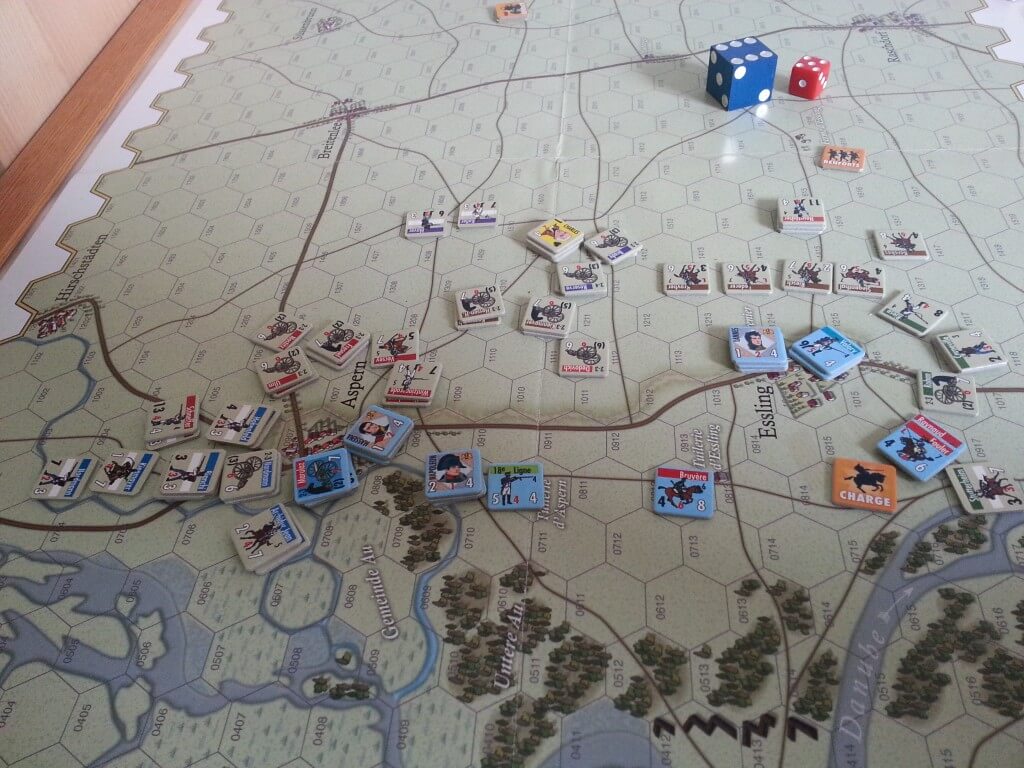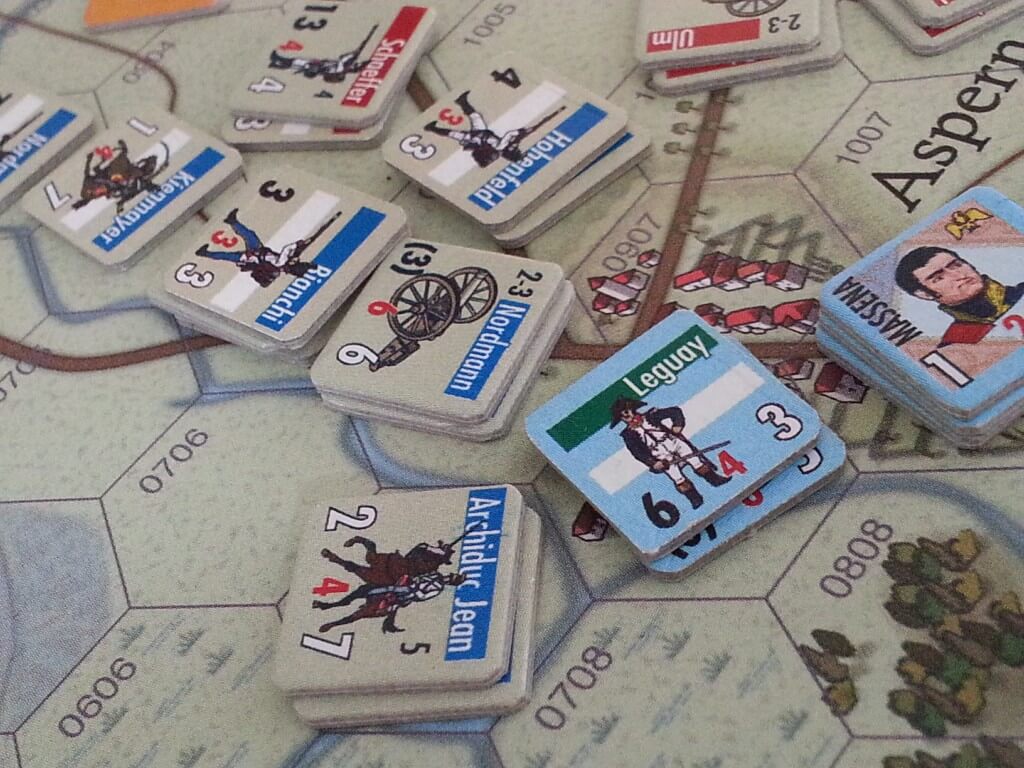Leguay resist a determined attack from Hilliers divisions., who end up disrupted and retreating after failing morale checks. This in turn causes further disruption in rear echelon units! End of turn 1400 Hour. The inability of the Austrians to one two punch the French due to command issues frustrates the assaults of the towns.
End of turn 1400 Hour. The inability of the Austrians to one two punch the French due to command issues frustrates the assaults of the towns.
On the right flank opportunistic Cavalry attacks force back the Austrians and destroy valuable guns!

So how do you like this game compared to The Last Success?
Joe, thanks for the note. This is a fast easy system,it probably has more chrome than Last Success. I don’t think either of them have the right ‘scale’ for napoleonics as a tactical game. 1 hour long turns with 400-500m hexes dont seem to work for me, Arty and Cav have a nominal impact. Line vs column is meaningless. I think both are ok, neither is a really good representation of Napoleonic tactical level combat. Both are fine games to play if you set that aside.
Yea, one hour/500 meter scale is tough. I suppose it is an effort to get the tactical flavor while maintaining some tenuous link to the operational possibilities. I haven’t played the JdG series yet, just read the rules, but it appears that it may do a better job because of how command control is treated. I feel there is little of it in TLS once you are engaged, since you aren’t concerned with moving and can always attack when adjacent. In JdG, you have to roll to attack and will depend upon command. That in of itself is a grand step in the right direction.
As to the role of artillery and cavalry. Hmm. During battles, cavalry didn’t play much of a role except during a charge after the infantry/artillery had already weakened part of the line and the units to be charged were sufficiently weakened. They are more suitable in the operational phase – screening and recon. I suppose in a battle like Aspern-Essling, you wouldn’t need them for that. And artillery, I don’t care for the combat model. Retreats are worthless, since you can move your units right back where they started next turn without any loss of casualties.
Artillery begins to stand out as a massed weapon in the Napoleonic era, esp. at Wagram. At this scale, I don’t know if you see a distinction between it and infantry during a fire/melee combat. Perhaps it would seem like just more infantry firing away to cause attrition to the point of breaking the other unit’s cohesion. I guess bombardment is the major ability difference – but if it only causes retreats? Certainly won’t see the differences of using cannister or the difference between 6 pounders and 12 pounders.
They are between games, somewhere between tactical and operational, trying to give the flavor of both, but not enough of either. I am curious how far OSG will go to game out all the Napoleonic battles. Time will tell how much wargamers will continue to shell out $100 for the same game, different map and pieces.
regards,
joe
Great insights Joe. The NLB system from Zucker feel very dated. The great value is his historical notes. Dont forget there is COmmand and control via Morale check in NLB too. JdG does an ok job as you mention above, plus has chit pulls to spice it up a bit.
1806-1815 the massed batteries evolved, Musket fire was still rather worthless at a 100 yards or more and Cav was used to either hold the enemy in place, rout broken units or in the rare instance a massed charge.
Melee was often a crap shoot, one side would break and run, THEN the casualties racked up. Not many games simulate any of this well enough as the unit size is too large.